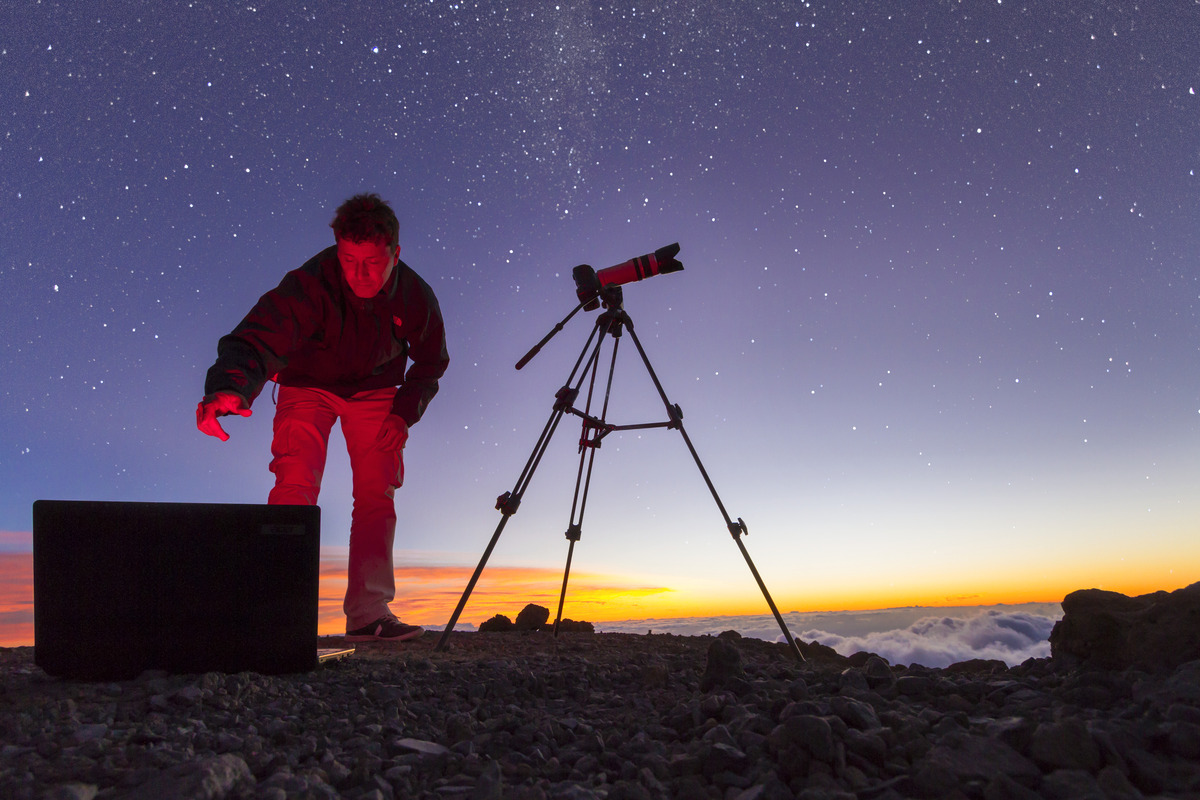The sky of the Canary Islands is the clearest in Europe and allows you to clearly observe the moon, the stars and celestial phenomena, due to the meteorological characteristics generated by the trade winds and the temperatures of the atmosphere which prevent the formation of clouds. Precisely for this peculiarity, the so-called “Law of Heaven” (approved in 1988) is in force here, which is concerned with limiting night-time light pollution; the same rules also protect the environment from radioelectric and atmospheric pollution and regulate air routes so that nothing can hinder the observation of the stars.
The 8 most scenic places in the Canaries to see the stars
The proximity to the Equator, the mountainous terrain and the height of the reliefs make the Canary Islands unique places in the world for so-called astrotourism, tourism linked to observing the sky, even with the naked eye. And what better occasion than International Moon Day, which is celebrated on July 20, and the Perseid meteor shower (the stars of San Lorenzo), which falls between the end of July and mid-August, to look upwards?
Stellar reserves in the Canary Islands
In the Canary Islands you can admire around 15,000 stars on any night of the year. The numbers are dizzying: just think that normally only 500 stars can be seen in the city.
On the islands there are three places recognized as World Heritage for astrotourism, the famous Starlight Reserves: the island of La Palma, Fuerteventura and Tenerife, particularly in the area of Teide and the highest peaks of the island. This certification is awarded to locations that have low light incidence and are therefore perfect for stargazing.
A stone’s throw from the starry sky
The Canaries are home to the Instituto de Astrofisica de Canarias, where scientists from all over the world gather to carry out studies and research. For this reason, thanks to the cooperation of several countries, Tenerife and La Palma have the most advanced day and night telescopes in the world. All this thanks to the strategic geographical position and climatic conditions.
Here are world-famous sites where cosmic studies and astrophysical experiments took place. Some of these structures are located at 2,400 meters above sea level, such as the GREGOR solar telescope in Tenerife, the largest in Europe, or the Roque de los Muchachos Astrophysical Observatory in La Palma, one of the most prestigious in the world, both centers open to the public. There are also tour guides who organize night walks and stargazing sessions at spectacular viewpoints.
The viewpoints in the Canary Islands and the constellations that can be recognized
1. The Palm
Located in the western part of the island, the San Borondón viewpoint allows you to clearly see the North Star and the constellations of Cassiopeia and Cepheus. In any case, looking at the sky of La Palma is always surprising, because with the naked eye it almost seems like you can touch it with your fingertips, especially if you stay in rural houses, the agritourisms of the Canary Islands.
2. Lanzarote
In summer, on new moon nights (when the moon is completely in shadow), from the Peñas del Chache viewpoint, at an altitude of 670 meters at the highest point of Lanzarote, you can observe the constellations of Sagittarius, in the recognizable shape of a teapot, and of Scorpio, reddish in colour.
3. Fuerteventura
From the viewpoint of Morro Velosa, near Betancuria, it is possible to clearly distinguish the “W” shape of Cassiopeia and Ursa Minor, with the North Star marking the north.
4. Gran Canaria
In Llanos de Garañón, 1,700 meters above sea level, you can perfectly see the constellations of Gemini, Auriga, Taurus and Orion. They are clearly distinguishable especially in spring.
In addition to displaying starry skies protected from light pollution, Gran Canaria hosts numerous tourist infrastructures and activities dedicated to observing the sky, which is why it is recognized by Unesco as a Tourist Destination for Astrotourism. Since ancient times the native peoples were devoted to the study of the sky and the signs are present in the archaeological site of Risco Caido.
5. La Gomera
At 1,487 meters above sea level is the highest point of the island, El Alto de Garajonay: a natural viewpoint perfect for observing constellations such as Orion, Gemini, Sagittarius, Scorpius and Ursa Minor, thanks to the island’s very low light pollution.
6. The Iron
In the west of the island of El Hierro is the Orchilla lighthouse which offers a well-accessible natural space to contemplate the sky while being lulled by the tranquility of the Atlantic Ocean. From here the constellation Taurus can be clearly distinguished.
7. Tenerife
The viewpoint of El Palmar, in the city of Buenavista, located in the north of the island, is an excellent place to observe the constellation of Orion and its hunting dogs, Canis Major and Canis Minor, especially in the last months of the year.
8. The Graceful
Hours can be spent gazing up at the immensity of the sky at the secluded Playa de Las Conchas, north of La Graciosa and en route from Caleta de Sebo to it.
READ ALSO: 8 reasons to go to the Canaries, one for each island
Advertising
